Modular 3U CubeSat Prototype Development with Focus on EPS

3U CubeSat Design
Project Overview
This project focuses on the development of a **Modular 3U CubeSat prototype**, prioritizing the design and implementation of a robust **Electrical Power System (EPS)**. The EPS ensures stable power generation, storage, and distribution to CubeSat subsystems such as payloads, attitude control, and communication modules. The design emphasizes modularity, affordability, and proof-of-concept functionality for ground-based testing, aligning with CubeSat deployment standards.
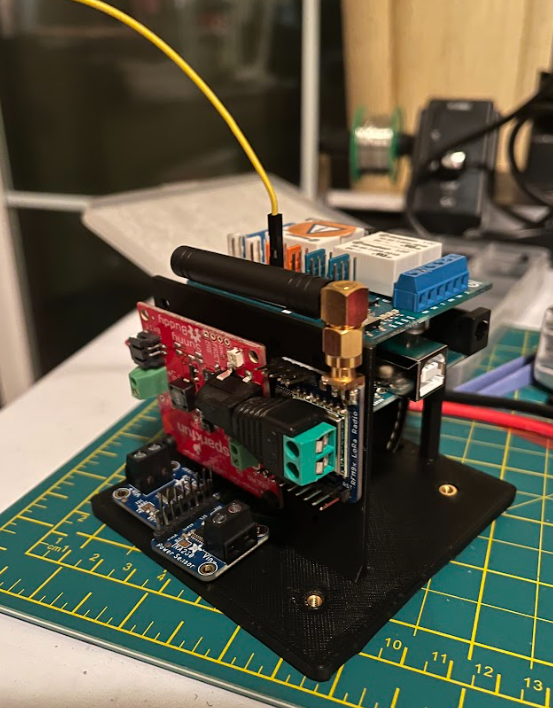
EPS

Structure
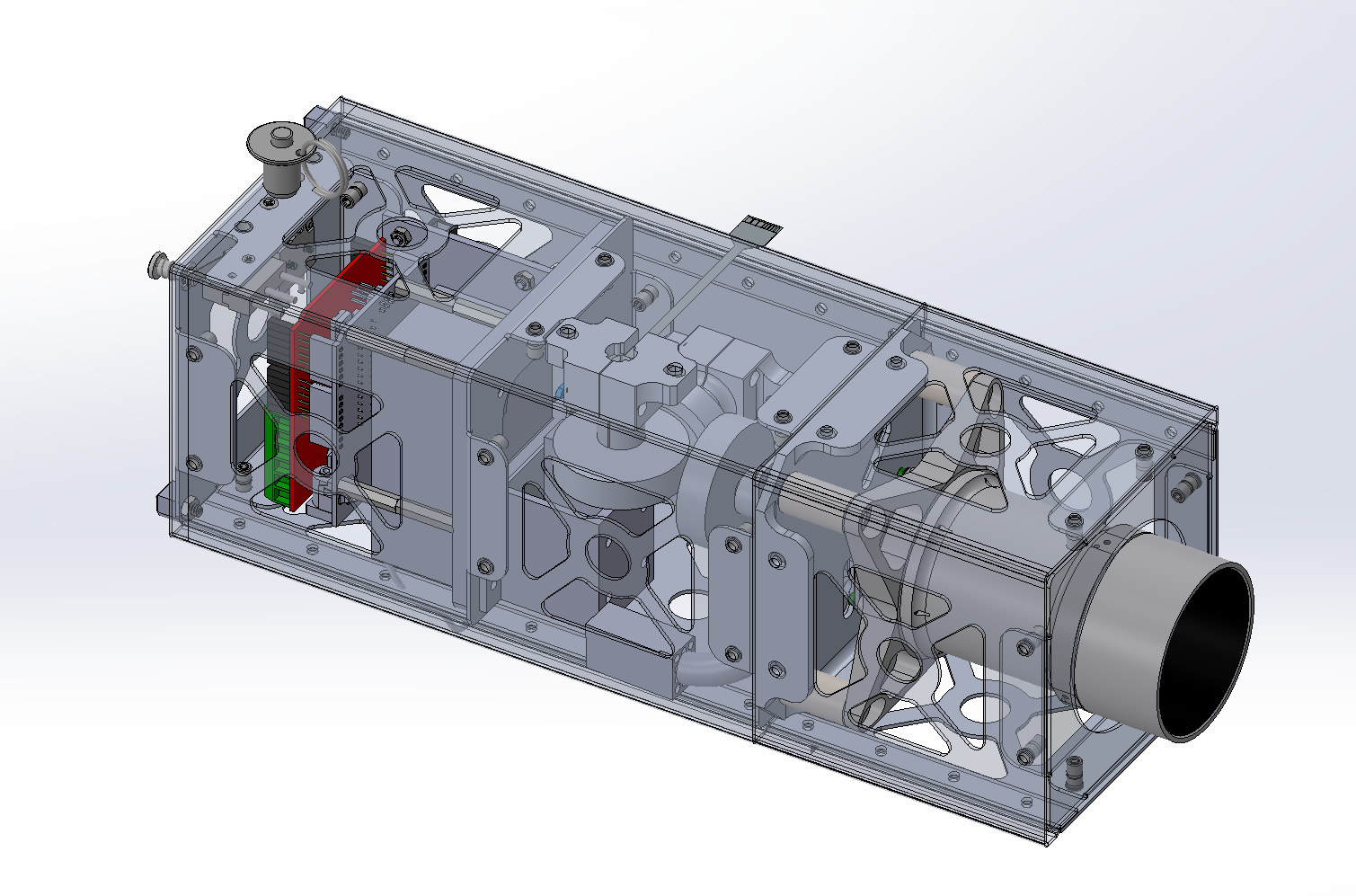
Design
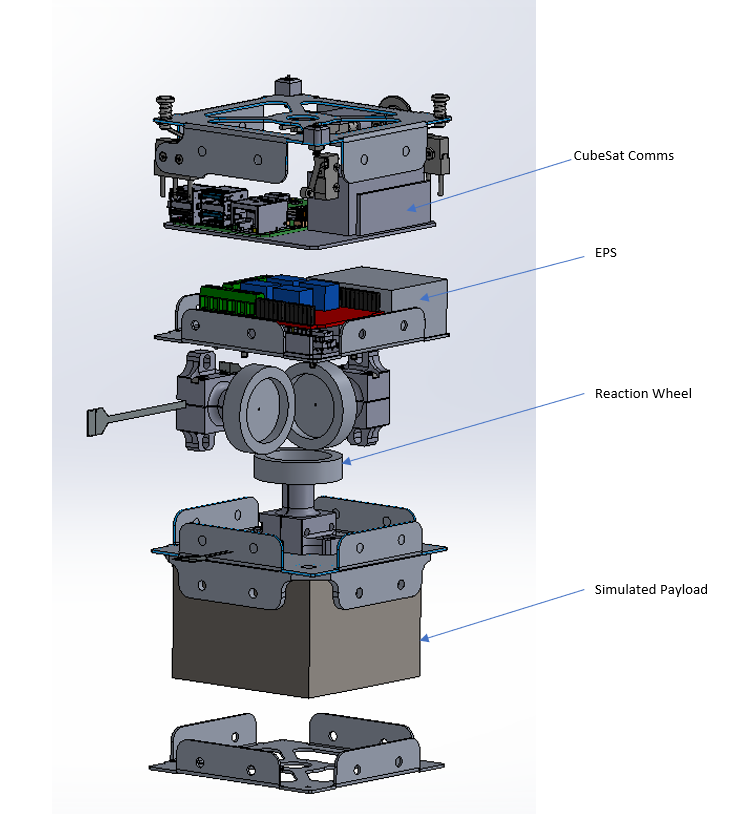
Design II
Background
The CubeSat project was a senior design endeavor involving a team of six students who began with no prior experience in satellite development. At our first meeting, we divided responsibilities among the team members based on NASA documentation, NanoRacks launcher requirements, and professor recommendations. The main subsystems identified were:
- Structure: Focused on the physical framework of the CubeSat.
- Electrical Power System (EPS): Responsible for power generation, storage, and distribution. (My primary responsibility)
- Control and Dynamics: Managed attitude control using foundational Simulink models. (I contributed to this subsystem)
- Communications: Ensured data transmission capabilities between the CubeSat and ground stations.
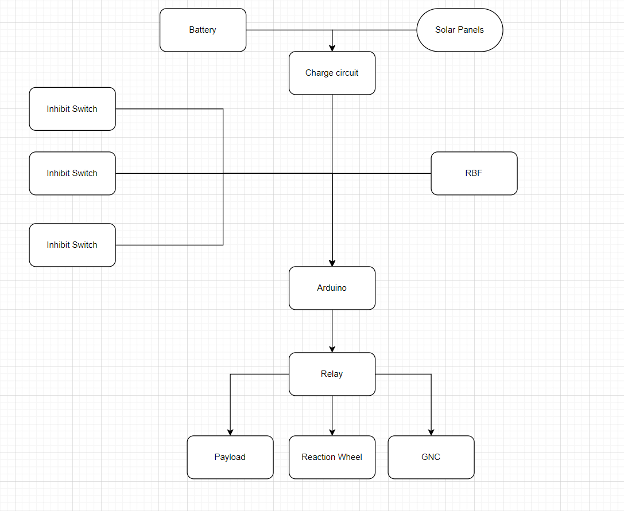
Figure: EPS System Diagram
Our work was divided into two semesters: the first focused on design and the second on building and testing. One of our first tasks was defining the mission statement, followed by market research, analysis of existing CubeSat technologies, and validation of requirements through analysis, testing, demonstration, or observation.
Problem Statement
The project addressed the challenge of designing an **efficient and modular EPS** capable of supporting CubeSat operations under the following constraints:
- A **limited budget** of approximately $1,400 USD, requiring the use of off-the-shelf components.
- Compliance with **NASA CubeSat standards** and **NanoRacks CubeSat Deployer (NRCD)** safety protocols.
- Reliability of power generation and storage to sustain **payloads and essential subsystems** during operation.
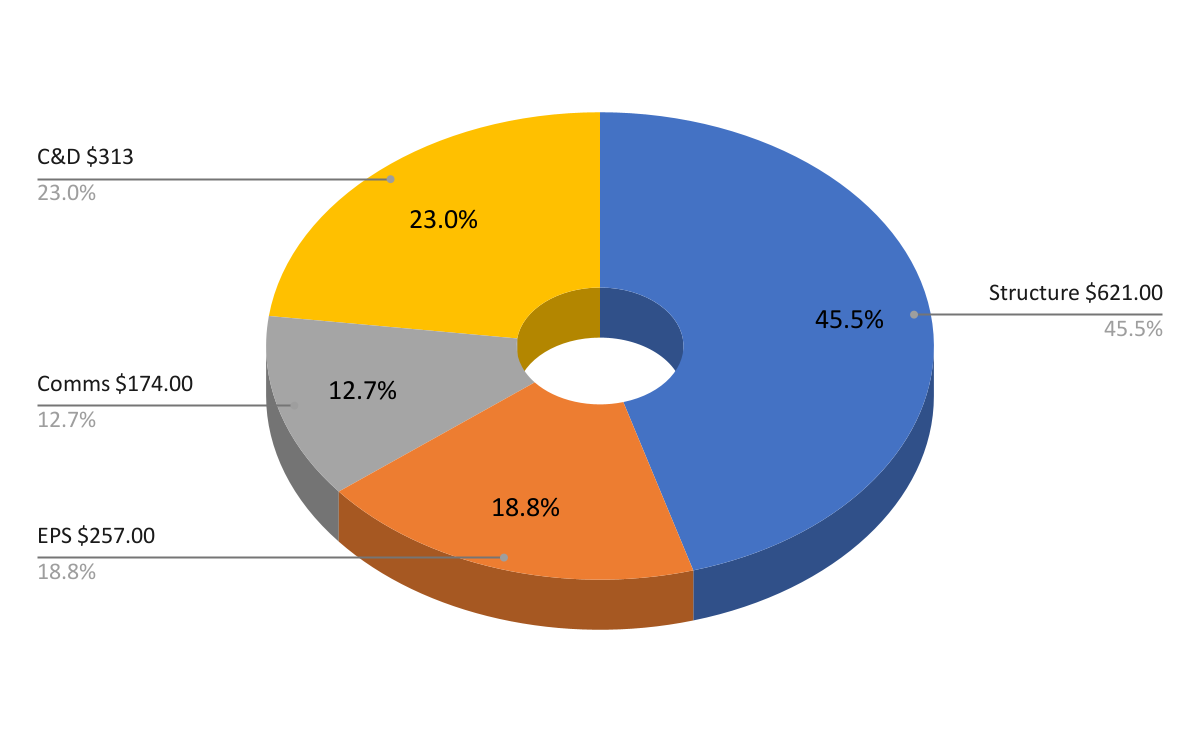
Project Cost Breakdown
The goal was to develop a functioning **EPS prototype** that provides stable energy delivery, modular integration, and scalability for future CubeSat iterations.

Low-Cost Multispectral Imaging Telescope (Payload)
Methodology
- System Design: Implemented the EPS using:
- Arduino Uno R3 as the microcontroller for power management.
- Fullsend 1550 mAh 14.8V LiPo battery for energy storage.
- SunnyTech solar panels for power generation.
- Safety Integration: Developed a **30-minute activation timer** to meet NanoRacks safety requirements for launch.
- Simulations and Analysis:
- Performed solar panel power output simulations using **MATLAB and Simulink**.
- Conducted discharge testing under a **7.4 W load** to validate system performance and energy capacity.
- System Modularity: Ensured flexible integration of future payloads and subsystems by adhering to a modular design architecture.
Research Findings
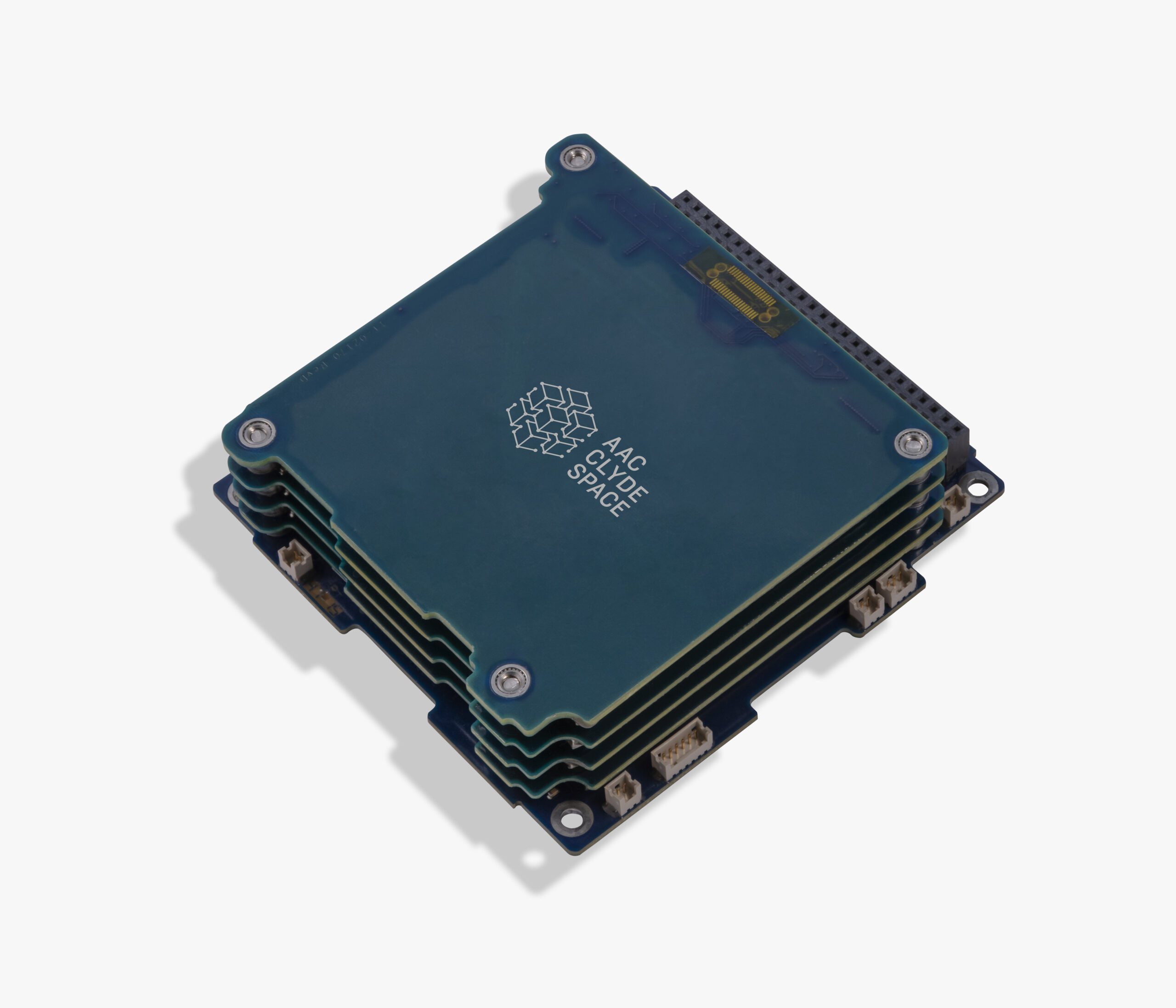
Source: AAC Clyde Space
Space Graded Batteries
| Company | Model | Capacity (Whr) | Mass (g) | Voltage (V) | Material | Operating Temperature (°C) |
|---|---|---|---|---|---|---|
| AAC Clyde Space | Optimus-30 | 30 | 268 | 8.4 | Li-Po | -10 to +50 |
| German Orbital | CubeSat Battery Pack | 38.48 | 175 | 7.4 | Li-Po | -40 to +80 |
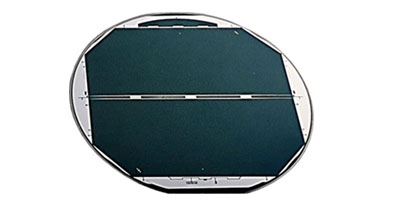
Source: Spectrolab
Space Graded Solar Panels
| Company | Model | Efficiency (%) | Area (cm²) | Operating Temp (°C) |
|---|---|---|---|---|
| Spectrolab | UTJ | 27.9 | 59.6 | -80 to +130 |
| SolAero | ZTJ | 30.2 | 26.35 | -80 to +130 |
Space Graded Power Management Modules
| Company | Model | Voltage (V) | Mass (g) | Features |
|---|---|---|---|---|
| AAC Clyde Space | STARBUCKNANO EPS | 8.2 | 86 | MPPT, 3.3V, 5V, 12V |
| EnduroSat | CubeSat Power Module | 5.5 | 298 | Battery Pack 20Wh, MPPT |

Source: EnduroSat
Requirements
| Requirement | Description |
|---|---|
| 3.1 | EPS storage system shall provide up to 22 Wh, delivering sufficient power to other subsystems via battery. |
| 3.2 | The separation switches initiate a 30-minute timer that delivers power to the CubeSat after being launched. |
| 3.3 | Solar cells shall charge the battery at a maximum charge rate of up to 450 mA. |
Analysis and Results
- Power Generation: Simulated solar panels achieved a peak output of **2 W** under ideal conditions.
- Power Storage: The battery provided a total energy capacity of **22 Wh**, sustaining performance for **22 minutes** under a continuous **7.4 W load**.
- System Reliability: Discharge testing confirmed stable power delivery, validating the EPS design for short-duration CubeSat missions.
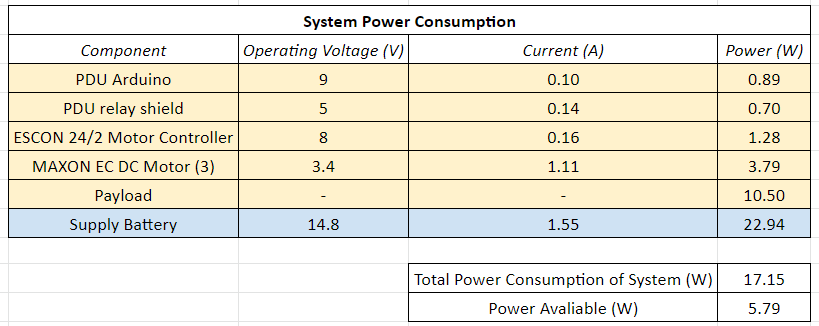
Estimated Power Consumption
EPS Components
| Component | Model | Operating Voltage (V) | Input Voltage (V) | Output Voltage (V) | Dimensions (mm) | Capacity/Type |
|---|---|---|---|---|---|---|
| Microcontroller | Arduino Uno | 5 | 7-12 | 6-20 | 68.6 x 58.4 | N/A |
| Battery (4) | MakerFocus | 3.7 | N/A | N/A | 44.95 x 24.9 | 1000 mAh |
| Solar Panels | SunnyTech | 5 | N/A | N/A | 81.026 x 73.9 | N/A |
| Battery Charger | SparkFun | 10 | 6-20 | 6-20 | 48 x 48 | MPPT |
| Relay | Arduino | 5-48 | 5-48 | 5-48 | 68.5 x 53 | N/A |
| Inhibit Switch (3) | Snap-Acting Switch | N/A | N/A | N/A | 27.94 x 16 | SPDT |
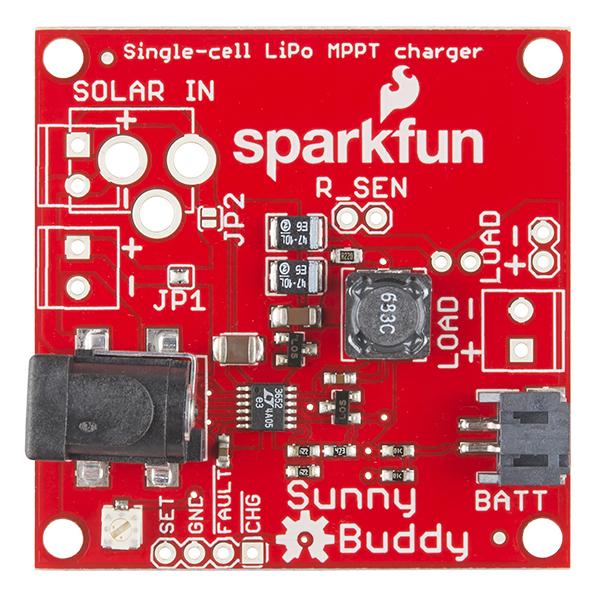
Solar Charger
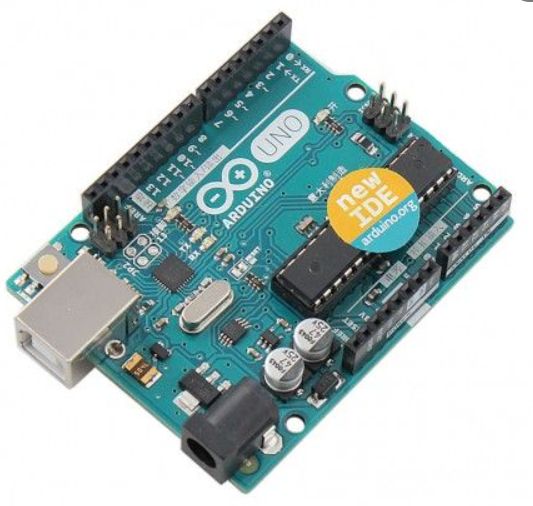
Arduino

Battery

Switch

Relay
Testing and Validation
The following tests were conducted to validate the EPS subsystem:
- Solar Charger Test: Verified voltage output and adjusted potentiometers for optimal performance.
- Battery Discharge Test: Measured voltage and capacity under simulated loads.
- Subsystem Integration: Ensured stable power delivery across CubeSat modules.

Figure: Solar Cells Testing
Tools and Skills Used
- **MATLAB and Simulink** for solar power simulations and system analysis.
- **Arduino Uno R3** for control system implementation.
- Battery discharge testing for performance validation.
- Hands-on development of modular CubeSat hardware systems.
Learn More
If you’re interested in diving deeper into this project, feel free to explore the following resources: